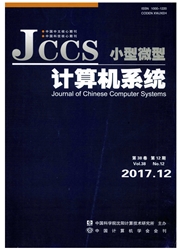

 中文摘要:
中文摘要:
针对流式计算系统计算和存储能耗过高的问题,改变流式计算中内存的存储状态,提出了一种内存节能策略(ESFM).首先,明确内存中不同状态之间的同步关系与转换条件;其次,通过降低内存活动状态的电压,减少处于内存活动状态的物理节点数量,将服务器中的部分内存从活动状态同步成休眠状态.最后,将计算后的数据存储于休眠状态的内存空间.实验证明和理论分析,在24台普通PC机构成的流式计算系统中,实施内存节能策略的系统比原系统有效节能约25.5%.此外,内存节能策略下的性能与能耗的比值为0.0766 tuple/s·J而原系统性能与能耗的比值为0.0792 tuple/s·J.由此可见,内存节能策略能够在不影响系统性能的前提下,有效降低能耗.
 英文摘要:
英文摘要:
As the problem of high energy consumption of computing and storage in stream computing system,the Energy-efficient Strategy for Memory (ESFM) to change the storage status of computer RAM in stream computing were put forward.First,the synchrony relations and transition condition in the different state of RAM were definite.Second,by reducing the voltage of memory active state and decreasing the number of physical nodes in the active state of the memory,the part of the server memory from the active state to the hibernation state were changed.Finally,we stored the calculated data in a memory space which is in dormant state.Experimental analysis and theoretic argument demonstrate that the system which using ESFM are more effective than the original system by 25.5% in stream computing system consisted of 24 ordinary PCs.Besides,in the condition of ESFM,the ratio of performance and energy consumption is 0.0766 tuple/s·J,while in the old,the ratio is 0.0792 tuple/s·J.Therefore,ESFM can reduce energy consumption effectively without influencing the performance of the system.
 同期刊论文项目
同期刊论文项目
 同项目期刊论文
同项目期刊论文
 期刊信息
期刊信息
